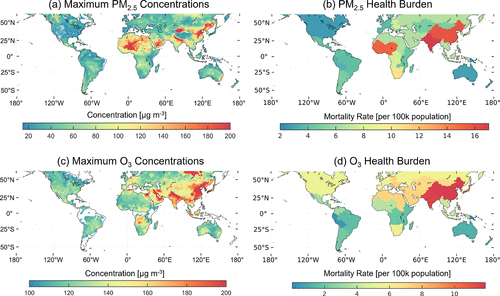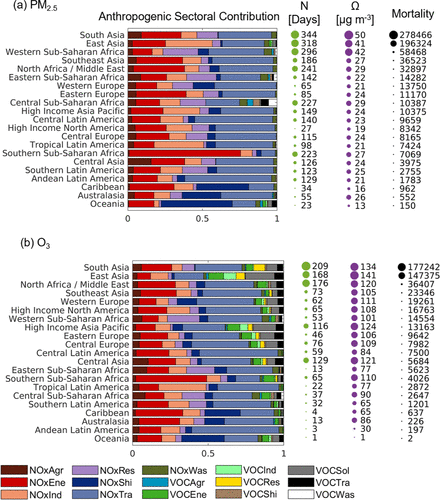Researchers quantify impacts of precursor emissions on PM2.5 and O3 attributable health burden
Air pollution, particularly from fine particulate matter (PM2.5) and ozone (O3), poses serious health risks, causing respiratory and cardiovascular diseases that lead to premature deaths. Despite global efforts to manage air quality, millions still face pollution levels above the World Health Organization’s (WHO) guidelines. Research into the sources and impacts of these pollutants is essential for developing effective strategies to reduce exposure and improve public health.

Understanding the specific contributions of precursor emissions like nitrogen oxides (NOx) and volatile organic compounds (VOCs) is crucial. Identifying key sectors responsible for these emissions also allows for targeted interventions, maximizing health benefits. Further exploration in this area is key for advancing our ability to mitigate air pollution and reduce its associated health burdens in the face of increasing energy demands and climate change.
Assistant Professor Lei Zhu’s research team from the School of Environmental Science and Engineering (ESE) at the Southern University of Science and Technology (SUSTech) has recently published a paper that isolates the health burden of individual sector sources of PM2.5 and O3 precursors – NOx and VOCs – across the globe.
Their paper, entitled “Short-Term Exposure to Fine Particulate Matter and Ozone: Source Impacts and Attributable Mortalities”, has been published in Environmental Science & Technology.
This work estimates mortalities attributable to short-term exposure using machine-learning-based daily exposure estimates and quantifies sectoral impacts using chemical transport model simulations.
In 2019, 97.5% and 87.1% of the population experienced PM2.5 and O3 pollution, respectively, exceeding the WHO’s daily air quality guidelines (Figure 1). Short-term exposure to PM2.5 and O3 resulted in 713.5 (95% Confidence Interval: 598.8–843.3) thousand and 496.3 (371.3–646.1) thousand mortalities, of which a large fraction was contributed by fuel-related NOx emissions from transportation, energy, and industry (Figure 2).
Sectoral impacts from anthropogenic NOx and VOC emissions on health burden vary significantly among seasons and regions, requiring a target shift from transportation in winter to industry in summer for East Asia, for instance. In addition, emission control and health management were complicated by unregulated natural influences during climatic events, such as fires and heatwaves.
This study provides important implications for temporally dynamic and sector-targeted emission control and health management strategies, which are of urgency under the projection of continuously increasing energy consumption and changing climate.

Figure 1. Maximum values of daily PM2.5 and MDA8 O3 concentrations and region-level mortality rates attributable to short-term pollution exposure in 2019

Figure 2. Normalized sectoral impacts on PM2.5- and O3-attributed mortalities from anthropogenic NOx and VOC emissions
Research Assistant Professor Song Liu from the School of ESE at SUSTech is the first author of this paper. Assistant Professor Lei Zhu is the corresponding author, and SUSTech is the first affiliation.
This work was funded by the National Natural Science Foundation of China and supported by the Center for Computational Science and Engineering at SUSTech.
Paper link: https://pubs.acs.org/doi/10.1021/acs.est.4c00339
